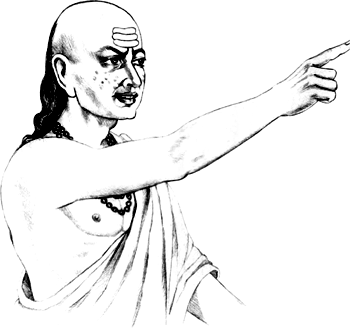Dec 12, 2025
Dec 12, 2025
Historical Overview"My nationalism is intense Internationalism. I am sick of strife between nations and religions." - Mahatma Gandhi.
 A significant document, recovered in the early years of this century (20th), is the Arthashastra (an exhaustive treatise and manual on statecraft and diplomacy). It is a prose work in 15 books authored by Kautilya, also known as Chanakya and Vishnu Gupta, who was the principal counselor - adviser of Emperor Chandra Gupta Maurya and was composed around 300 B.C. It shows close acquaintance with the administrative and the diplomatic methods of Hellenistic States, particularly in Syria and Egypt and is a distilled quintessence of various schools on this subject which then existed in India. The institution of diplomatic envoys is dealt in Book-I, Chapter XVI. Whether the diplomatic mission is ad hoc or permanent, the mission had to follow well accepted principles in inter-state relations. Adoption of appropriate 'diplomatic language' was considered important in dealings between rulers and kings. Guda lekha (code language) was adopted for diplomatic correspondence.
A significant document, recovered in the early years of this century (20th), is the Arthashastra (an exhaustive treatise and manual on statecraft and diplomacy). It is a prose work in 15 books authored by Kautilya, also known as Chanakya and Vishnu Gupta, who was the principal counselor - adviser of Emperor Chandra Gupta Maurya and was composed around 300 B.C. It shows close acquaintance with the administrative and the diplomatic methods of Hellenistic States, particularly in Syria and Egypt and is a distilled quintessence of various schools on this subject which then existed in India. The institution of diplomatic envoys is dealt in Book-I, Chapter XVI. Whether the diplomatic mission is ad hoc or permanent, the mission had to follow well accepted principles in inter-state relations. Adoption of appropriate 'diplomatic language' was considered important in dealings between rulers and kings. Guda lekha (code language) was adopted for diplomatic correspondence.
24-Oct-2010
More by : K. Gajendra Singh

|
Honurable Sir, We have gone through your article on Diplomatic Profession in Ancient India, which is very much interesting. We feel that a complete book on the topic, if made available, will be useful to the contemporary reader working in this filed. We take this opportunity to introduce ourselves as one of the growing publisher in the field of Indology under the name of Kaveri Books based in publisher's market at Darya Ganj, New Delhi. If you can elaborate this topic and convert it into a book, we will be interested in publishing the same. Regards, Rakesh Goel |

|
Why, the Lord Krishna failed to maitain nurality and took one-side. |